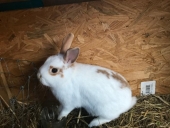Oh goody, a rabbit hole! I have not eaten it yet, and had only heard of eating the seeds. Thank you!
I wandered around your suggested rabbit hole for a while this evening...
Minnesota Wildflowers has a good way to identify the difference between the invasive
australis and one of the native subspecies
americanus. If you are whaking away at an existing stand of the invasive, it does not make any difference to the subspecies. If like me, you are investigating hauling in some seed to a one acre location... You really don't want to import a monoculture. The
americanus variety has a larger spacing between plants, allowing for some diversity.
 Here is a USDA field guide
Here is a USDA field guide in PDF format. It has many additonal nuggets on differences.
Americanus generally only grows to 7 feet tall. The PDF has a photo of a gorgeous Anasazi mat and seveal other artifacts from the native
americanus.





